#rogue planets
Explore tagged Tumblr posts
Text
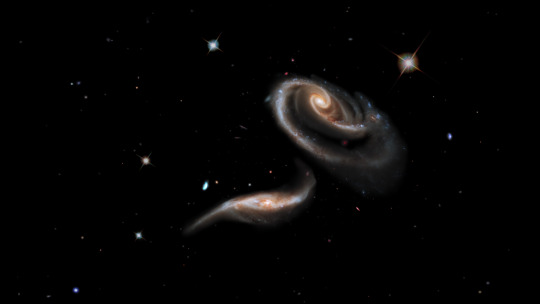
Love Letters from Space
Love is in the air, and it’s out in space too! The universe is full of amazing chemistry, cosmic couples held together by gravitational attraction, and stars pulsing like beating hearts.
Celestial objects send out messages we can detect if we know how to listen for them. Our upcoming Nancy Grace Roman Space Telescope will help us scour the skies for all kinds of star-crossed signals.
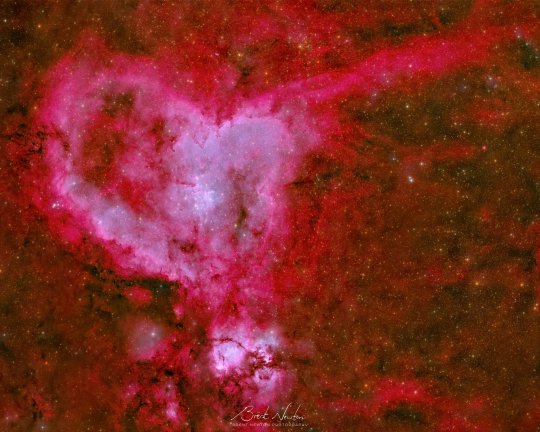
Celestial Conversation Hearts
Communication is key for any relationship – including our relationship with space. Different telescopes are tuned to pick up different messages from across the universe, and combining them helps us learn even more. Roman is designed to see some visible light – the type of light our eyes can see, featured in the photo above from a ground-based telescope – in addition to longer wavelengths, called infrared. That will help us peer through clouds of dust and across immense stretches of space.
Other telescopes can see different types of light, and some detectors can even help us study cosmic rays, ghostly neutrinos, and ripples in space called gravitational waves.
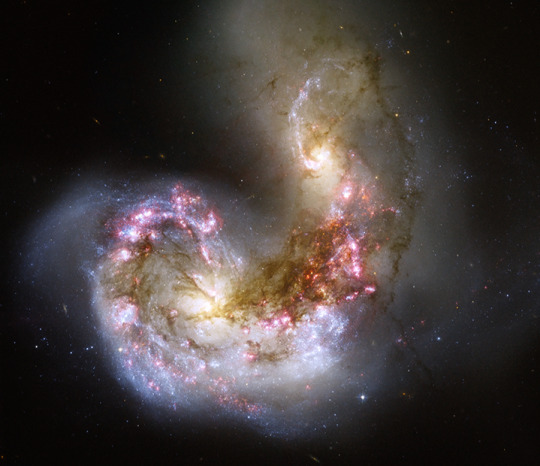
Intergalactic Hugs
This visible and near-infrared image from the Hubble Space Telescope captures two hearts locked in a cosmic embrace. Known as the Antennae Galaxies, this pair’s love burns bright. The two spiral galaxies are merging together, igniting the birth of brand new baby stars.
Stellar nurseries are often very dusty places, which can make it hard to tell what’s going on. But since Roman can peer through dust, it will help us see stars in their infancy. And Roman’s large view of space coupled with its sharp, deep imaging will help us study how galaxy mergers have evolved since the early universe.
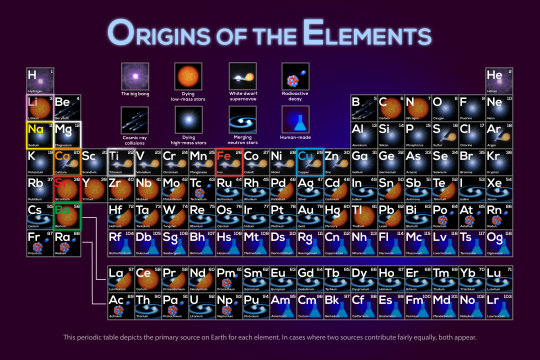
Cosmic Chemistry
Those stars are destined to create new chemistry, forging elements and scattering them into space as they live, die, and merge together. Roman will help us understand the cosmic era when stars first began forming. The mission will help scientists learn more about how elements were created and distributed throughout galaxies.
Did you know that U and I (uranium and iodine) were both made from merging neutron stars? Speaking of which…
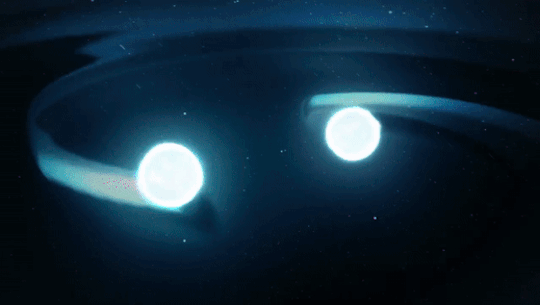
Fatal Attraction
When two neutron stars come together in a marriage of sorts, it creates some spectacular fireworks! While they start out as stellar sweethearts, these and some other types of cosmic couples are fated for devastating breakups.
When a white dwarf – the leftover core from a Sun-like star that ran out of fuel – steals material from its companion, it can throw everything off balance and lead to a cataclysmic explosion. Studying these outbursts, called type Ia supernovae, led to the discovery that the expansion of the universe is speeding up. Roman will scan the skies for these exploding stars to help us figure out what’s causing the expansion to accelerate – a mystery known as dark energy.
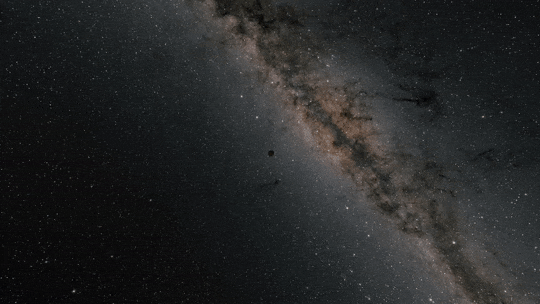
Going Solo
Plenty of things in our galaxy are single, including hundreds of millions of stellar-mass black holes and trillions of “rogue” planets. These objects are effectively invisible – dark objects lost in the inky void of space – but Roman will see them thanks to wrinkles in space-time.
Anything with mass warps the fabric of space-time. So when an intervening object nearly aligns with a background star from our vantage point, light from the star curves as it travels through the warped space-time around the nearer object. The object acts like a natural lens, focusing and amplifying the background star’s light.
Thanks to this observational effect, which makes stars appear to temporarily pulse brighter, Roman will reveal all kinds of things we’d never be able to see otherwise.
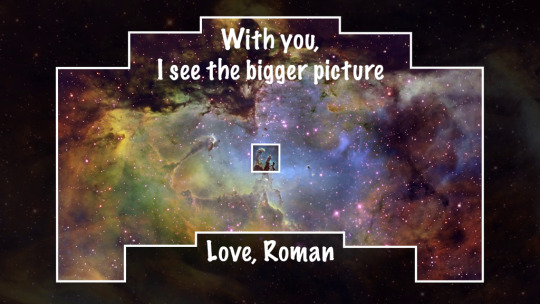
Roman is nearly ready to set its sights on so many celestial spectacles. Follow along with the mission’s build progress in this interactive virtual tour of the observatory, and check out these space-themed Valentine’s Day cards.
Make sure to follow us on Tumblr for your regular dose of space!
#NASA#astronomy#telescope#Roman Space Telescope#Valentine’s Day#space#science#STEM#nebula#chemistry#galaxies#black holes#rogue planets#exoplanets#Hubble Space Telescope#tech
3K notes
·
View notes
Text

The Sun's Lagrange Points
Scientists at the University of Yeshiva have been modelling our Solar System, to see how far out the gravity of our star could influence even capture objects, and concluded it's as far out as 3.8 light years.
To put that into perspective, the closest star to our Sun is 4.24 light years, and would seem to suggest that there could even be an area of interchange between the two.

Enter the Lagrange points, areas of balance most frequently used between our Sun and Earth's gravitational influence, in fact, JWST uses one of these L points to maintain a stable orbit.
There is of course such points between all bodies, and the team were looking specifically at the Lagrange points between our Sun and the Galaxy itself, and how gravity here could provide an area where objects could get stuck in an orbit.
Consider that such objects will have been moving at the time of capture, the team predicts a fractal like pattern to the orbit, even possibly to dwarf planets or rogue planets, although the team suspect the latter would be too big to capture.
The outcome of the research is to suggest we turn our attention to these Lagrange areas between our Sun and Galaxy, and see what's orbiting there.
83 notes
·
View notes
Text
Rogue Planets
Salaam loves! Check out a new poem series about love and space; 'Rogue Planets' on my website or insta.
Rogue Planets
or
https://www.instagram.com/p/CzVcXRoiQ9_/?utm_source=ig_web_copy_link&igsh=MzRlODBiNWFlZA==
My tag list is out of this world :
@jayrealgf @think-through-pen @unforgettable-sensations @jordynhaiku @sweetwarmcookies16 @grimfox @mk-ranz
#new poem series#Rogue Planets#Poems about love and space#check it out if you want#poetry#poem#writing#literature#poems#poems on tumblr#poet#poetic#poets on tumblr#love#love and space#Instagram
10 notes
·
View notes
Text
all the stars in the universe
yet rogue planets can’t call one home
drifting through the cold abyss
cruelly cursed to roam
4 notes
·
View notes
Text
Lost Worlds: Could Rogue Planets Host Life?
Introduction Fig 1: An artist’s depiction of a rogue planet floating through the darkness of interstellar space. When we imagine life beyond Earth, we usually picture sunlit planets orbiting distant stars—worlds with golden skies and oceans reflecting a familiar sun. But what if life isn’t confined to the warmth of a parent star? What if some of the universe’s most intriguing lifeforms drift…
0 notes
Text
Tf do rogue planets think they’re doing travelling at millions of kilometers per hour- what, you got somewhere to be? Where are you going in such a hurry?
0 notes
Text
Most of the planets in the Universe orbit a star. They are part of a system of planets, similar to our own solar system. But a few planets drift alone in the cosmos. For whatever reason, be it a near collision or slow gravitational perturbations that destabilize its orbit, these planets are cast out of their star system and sent adrift. These rogue planets are notoriously challenging to find, but as we start to discover them we’re finding they are a bit more common than we’d thought. Now a new study posits a reason why. What they found was that while in single-star systems planets need to be closely spaced to create a rogue planet, in binary systems planets can be widely spaced and still generate rogues. The combination of gravitational tugs from both the stars and other planets is sufficient to destabilize the orbits of some planets. In general, the largest planet of the system remains stable and can destabilize the orbits of smaller planets. Based on their simulations, if the two stars have a circular orbit, then the presence of a Neptune-sized world is enough to generate rogue worlds. If the binary stars orbit each other in an elliptical orbit, then the presence of a super-Earth is enough to generate rogue planets.
0 notes
Text

Star Wars: Rogue Planet | New official cover illustration by Uzuri
#star wars#Star Wars rogue planet#rogue planet#obi wan kenobi#anakin skywalker#Star Wars legends#sw legends#star wars eu#star wars expanded universe#star wars legends#swlegends#uzuri art#uzuriartonline
149 notes
·
View notes
Text
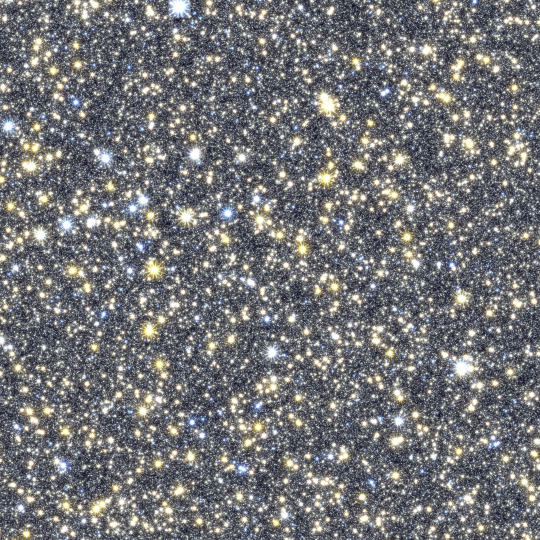
A simulated image of NASA’s Nancy Grace Roman Space Telescope’s future observations toward the center of our galaxy, spanning less than 1 percent of the total area of Roman’s Galactic Bulge Time-Domain Survey. The simulated stars were drawn from the Besançon Galactic Model.
Exploring the Changing Universe with the Roman Space Telescope
The view from your backyard might paint the universe as an unchanging realm, where only twinkling stars and nearby objects, like satellites and meteors, stray from the apparent constancy. But stargazing through NASA’s upcoming Nancy Grace Roman Space Telescope will offer a front row seat to a dazzling display of cosmic fireworks sparkling across the sky.
Roman will view extremely faint infrared light, which has longer wavelengths than our eyes can see. Two of the mission’s core observing programs will monitor specific patches of the sky. Stitching the results together like stop-motion animation will create movies that reveal changing objects and fleeting events that would otherwise be hidden from our view.
youtube
Watch this video to learn about time-domain astronomy and how time will be a key element in NASA’s Nancy Grace Roman Space Telescope’s galactic bulge survey. Credit: NASA’s Goddard Space Flight Center
This type of science, called time-domain astronomy, is difficult for telescopes that have smaller views of space. Roman’s large field of view will help us see huge swaths of the universe. Instead of always looking at specific things and events astronomers have already identified, Roman will be able to repeatedly observe large areas of the sky to catch phenomena scientists can't predict. Then astronomers can find things no one knew were there!
One of Roman’s main surveys, the Galactic Bulge Time-Domain Survey, will monitor hundreds of millions of stars toward the center of our Milky Way galaxy. Astronomers will see many of the stars appear to flash or flicker over time.
youtube
This animation illustrates the concept of gravitational microlensing. When one star in the sky appears to pass nearly in front of another, the light rays of the background source star are bent due to the warped space-time around the foreground star. The closer star is then a virtual magnifying glass, amplifying the brightness of the background source star, so we refer to the foreground star as the lens star. If the lens star harbors a planetary system, then those planets can also act as lenses, each one producing a short change in the brightness of the source. Thus, we discover the presence of each exoplanet, and measure its mass and how far it is from its star. Credit: NASA's Goddard Space Flight Center Conceptual Image Lab
That can happen when something like a star or planet moves in front of a background star from our point of view. Because anything with mass warps the fabric of space-time, light from the distant star bends around the nearer object as it passes by. That makes the nearer object act as a natural magnifying glass, creating a temporary spike in the brightness of the background star’s light. That signal lets astronomers know there’s an intervening object, even if they can’t see it directly.
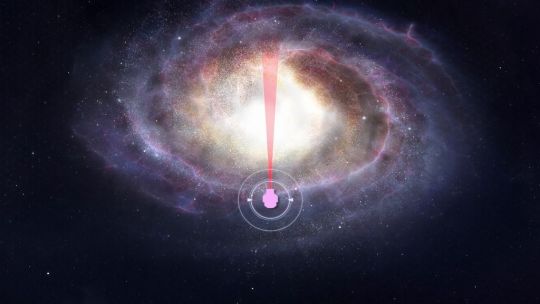
This artist’s concept shows the region of the Milky Way NASA’s Nancy Grace Roman Space Telescope’s Galactic Bulge Time-Domain Survey will cover – relatively uncharted territory when it comes to planet-finding. That’s important because the way planets form and evolve may be different depending on where in the galaxy they’re located. Our solar system is situated near the outskirts of the Milky Way, about halfway out on one of the galaxy’s spiral arms. A recent Kepler Space Telescope study showed that stars on the fringes of the Milky Way possess fewer of the most common planet types that have been detected so far. Roman will search in the opposite direction, toward the center of the galaxy, and could find differences in that galactic neighborhood, too.
Using this method, called microlensing, Roman will likely set a new record for the farthest-known exoplanet. That would offer a glimpse of a different galactic neighborhood that could be home to worlds quite unlike the more than 5,500 that are currently known. Roman’s microlensing observations will also find starless planets, black holes, neutron stars, and more!
youtube
This animation shows a planet crossing in front of, or transiting, its host star and the corresponding light curve astronomers would see. Using this technique, scientists anticipate NASA’s Nancy Grace Roman Space Telescope could find 100,000 new worlds. Credit: NASA’s Goddard Space Flight Center/Chris Smith (USRA/GESTAR)
Stars Roman sees may also appear to flicker when a planet crosses in front of, or transits, its host star as it orbits. Roman could find 100,000 planets this way! Small icy objects that haunt the outskirts of our own solar system, known as Kuiper belt objects, may occasionally pass in front of faraway stars Roman sees, too. Astronomers will be able to see how much water the Kuiper belt objects have because the ice absorbs specific wavelengths of infrared light, providing a “fingerprint” of its presence. This will give us a window into our solar system’s early days.
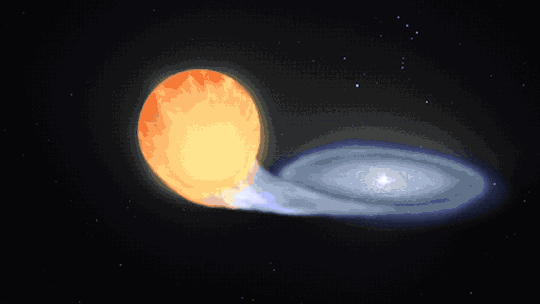
This animation visualizes a type Ia supernova.
Roman’s High Latitude Time-Domain Survey will look beyond our galaxy to hunt for type Ia supernovas. These exploding stars originate from some binary star systems that contain at least one white dwarf – the small, hot core remnant of a Sun-like star. In some cases, the dwarf may siphon material from its companion. This triggers a runaway reaction that ultimately detonates the thief once it reaches a specific point where it has gained so much mass that it becomes unstable.
youtube
NASA’s upcoming Nancy Grace Roman Space Telescope will see thousands of exploding stars called supernovae across vast stretches of time and space. Using these observations, astronomers aim to shine a light on several cosmic mysteries, providing a window onto the universe’s distant past. Credit: NASA’s Goddard Space Flight Center
Since these rare explosions each peak at a similar, known intrinsic brightness, astronomers can use them to determine how far away they are by simply measuring how bright they appear. Astronomers will use Roman to study the light of these supernovas to find out how quickly they appear to be moving away from us.
By comparing how fast they’re receding at different distances, scientists can trace cosmic expansion over time. This will help us understand whether and how dark energy – the unexplained pressure thought to speed up the universe’s expansion – has changed throughout the history of the universe.
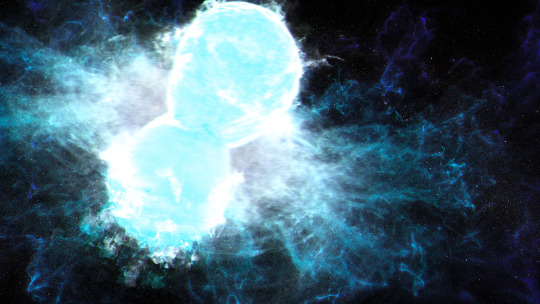
NASA’s Nancy Grace Roman Space Telescope will survey the same areas of the sky every few days. Researchers will mine this data to identify kilonovas – explosions that happen when two neutron stars or a neutron star and a black hole collide and merge. When these collisions happen, a fraction of the resulting debris is ejected as jets, which move near the speed of light. The remaining debris produces hot, glowing, neutron-rich clouds that forge heavy elements, like gold and platinum. Roman’s extensive data will help astronomers better identify how often these events occur, how much energy they give off, and how near or far they are.
And since this survey will repeatedly observe the same large vista of space, scientists will also see sporadic events like neutron stars colliding and stars being swept into black holes. Roman could even find new types of objects and events that astronomers have never seen before!
Learn more about the exciting science Roman will investigate on X and Facebook.
Make sure to follow us on Tumblr for your regular dose of space!
#NASA#astronomy#telescope#Roman Space Telescope#dark energy#galaxies#cosmology#astrophysics#stars#galaxy#space images#time#supernova#Nancy Grace Roman#black holes#neutron stars#kilonova#rogue planets#exoplanets#space#science#tech#technology#Youtube
3K notes
·
View notes
Text

Gaia's Surprise
Gaia has been scanning the sky now since 2012 but is soon due to be decommissioned, but it's scanned billions of stars in our Milky Way enabling astronomers to produce an amazing map of our galaxy, at least those parts we can see.
In the previous data release by Gaia, two interesting systems were found, Gaia 4 & 5, two low mass red dwarfs 244 light years and 144 light years respectively.
Both small stars appear to have extra large planetary companions, one being a brown dwarf, and the other a large Jupiter sized planet.

The surprise is, such small stars are theorised to not generally hold such large planets. and so these two, are upending assumptions, and when Gaia finally ends it's mission in March and sends it's final upload, it may reveal many many more examples, the tip of a iceberg that challenges assumptions.
Of course, there are other possibilities here, planets can be passed between stars, they can be thrown out into space, and then collected again. There has been speculation about Uranus in relation to this in the past.
In a close cluster, it's reasonable to imagine stars, planets, and many rogues being passed around between the cluster, before finally settling or being ejected out of the cluster.
As these small low mass stars make up more than 70% of all stars, it's perfectly reasonable to imagine they are like a heavenly sponge, picking up the neglected and ejected planets .
35 notes
·
View notes
Text
S.P

11 notes
·
View notes
Text
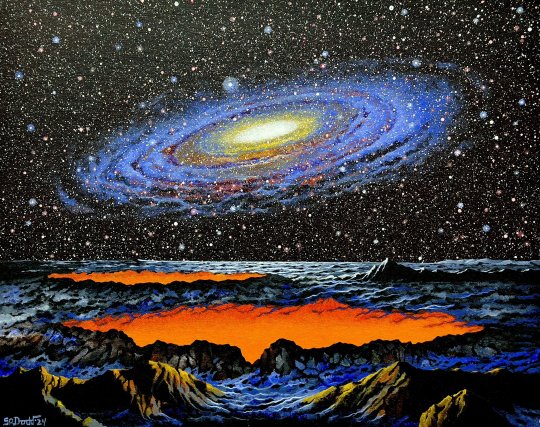
Steve R Dodd, Rogue Planet 2, 2024
85 notes
·
View notes
Text
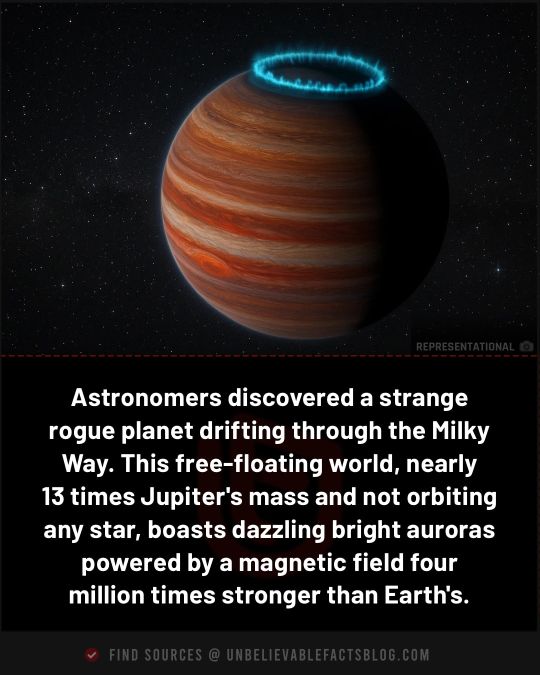
Astronomers discovered a strange rogue planet drifting through the Milky Way. This free-floating world, nearly 13 times Jupiter's mass and not orbiting any star, boasts dazzling bright auroras powered by a magnetic field four million times stronger than Earth's.
121 notes
·
View notes
Text


Finished Rogue Planet and my favorite part is in the first chapter where we get a glimpse of Anakin’s early life in the Temple.
He’s building droids no one wants, sneaking out to race, and making Obi-Wan run around Coruscant after him. Meanwhile, Masters are looking on fondly, saying things like, “He will bring you wisdom!”
172 notes
·
View notes
Text

Rebelcaptain Fix-It-Week day 6
-> how they live after the war
I think if Jyn and Cassian had survived (which they DID! Gareth Edwards told me so himself) that they would have become parents one way or another.
Maybe they would have children of their own, but I like the idea of them adopting war-orphans. And that they would see each other in their children’s eyes.
#ahh this is my first entry for this sort of thing#but yeah this is one of my all time fav headcanons for rebelcaptain#also idk on which planet they’d settle down on but the countryside seems fitting I think#rcfixitweek#rebelcaptain#jyn erso#cassian andor#rogue one#star wars
101 notes
·
View notes
Text
Oh there is nothing as silly and sweet and incredulous and so so so soooo important to me as all of the Metal Cardbots sealed in the Metal Breath waking up and excitedly calling out to Jun as soon as they sensed him!! And recognizing it is him because they are tied to him in spirit just as Blue Cop is!!
Them who were still trapped inside and a distance away, felt and knew it was Jun the same way Blue Cop felt and knew Jun was still safe inside the Speranza!!
#IT MEANS SO MUCH TO MEEEE HOW THAT THEY KNOW HIS HEART EVEN AFTER THE TIME SPENT AWAY AND NOT EVEN PHYSICALLY ON HIM!!! OH HOW MUCH JUN HAS#GROWN AND THE CARDBOTS HAVE GROWN WITH HIM AND THANKS TO ONE ANOTHER!!!!#Metal Cardbot#Metal Cardbot S#메탈카드봇#He just. This young child has such a good heart that puts so much sincere trust in this giant mechanical beings he openly calls friends and#they *feel* that they accept it and call him friend in turn and want to become stronger together with him#To show that they can have a home and a place here they can coexist and create something special after losing so much after losing everythin#And it’s absolutely mind boggling to me how the concept of friendship is one that wasn’t at least according to what we’ve been shown#so common and widely expressed across planet Machina#You had acquaintances work colleagues rogues heroes criminals teams and chains of command#But friendship and family are rarer concepts#And it’s absolutely fascinating especially when you realize how so many of these Cardbots are so inherently lonely despite how vocal they#are about their ideas of freedom and being ‘stripped’ of it#Oh I’m rambling again but I just have so many thoughts about this kids show and how charming it is#Jun Grant#Blue Cop#Mega Trucker#Mega Ambler#Phoenix Fire#Shadow X#Dexter#Fleta Z#Wild Guardy#Buffalo Crush#Buster Gallon#Black Hook#Heavy Iron#Ani Rambles
75 notes
·
View notes